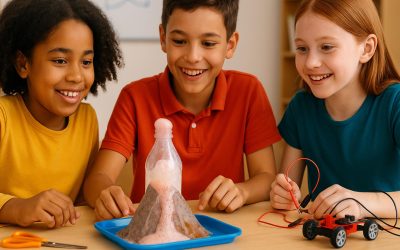Keeping children engaged in screen-free activities can be a challenge. A hands-on DIY craft not only entertains them but also fosters creativity, patience, and fine motor skills. Today, we’ll create a Paper Plate Marble Maze, a project that transforms simple materials into a fun, challenging game your kids will love.
Materials Needed
- Paper plates (2 per maze)
- Marbles (2–3)
- Craft sticks (popsicle sticks, about 10)
- Hot glue gun (with adult supervision)
- Acrylic paint and brushes
- Colored markers or stickers
- Scissors
Step-by-Step Instructions
- Prepare the Base
Glue two paper plates together, rim to rim, to form a deeper base for the maze. Let the glue set. - Design the Maze Layout
Using a pencil, lightly sketch a start point at the center and an end point near the rim. Plan paths and dead-ends between them. - Build the Walls
Cut craft sticks to different lengths. Arrange them on the plate to form walls following your sketch. Once satisfied, glue each stick in place. - Paint and Decorate
After the glue dries, paint the maze base and walls. Encourage kids to choose colors and add stickers or draw patterns. - Add the Marbles
Place marbles at the start point. Tilt the plate gently to guide the marble through the maze. - Challenge and Replay
Time each run to add a competitive element. Modify the maze by gluing additional walls for new challenges.
Benefits for Kids
- Enhances Fine Motor Skills: Cutting, gluing, and painting refine hand–eye coordination.
- Boosts Problem-Solving: Designing and navigating the maze encourages critical thinking.
- Promotes Creativity: Decorating allows self-expression.
- Encourages Patience: Building and testing the maze teaches perseverance.
Tips for Success
- Let kids sketch multiple maze designs on paper before building.
- Use non-toxic, washable paint for easy cleanup.
- Turn it into a group activity: siblings or friends can collaborate on different maze sections.
Conclusion
The Paper Plate Marble Maze is an engaging, low-cost craft that keeps kids entertained while promoting key developmental skills. It’s perfect for rainy afternoons, playdates, or as a classroom STEM activity. Give it a try and watch your children’s creativity soar!








0 Comments